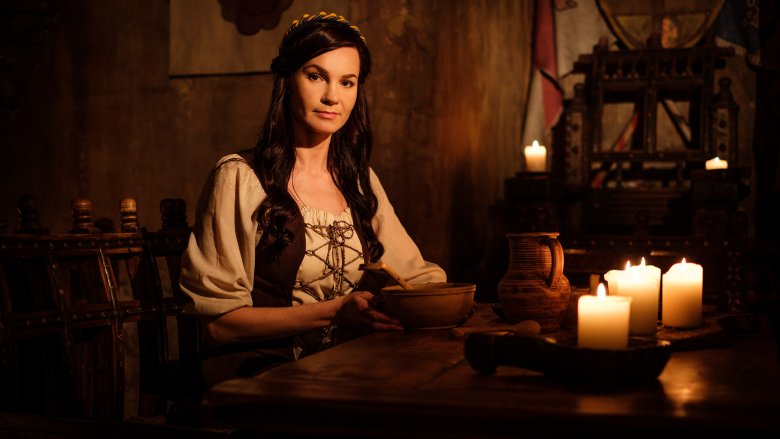What Life Was Like For Women In The Middle Ages
Chivalry, romance, and those weird pointy hats. What's not to love about life during the Middle Ages? Except, you know, everything. Hollywood may have painted a lovely picture of lords and ladies, gorgeous dresses, feasting and dancing and living in castles, but that's not what it was like for the majority of people. And for women, well, even if you did live in a castle and wear gorgeous dresses, life was really not that great.
According to the Ancient History Encyclopedia, there were pretty much two occupations open to noblewomen during that period in time: You could get married, or you could be a nun. For the lower classes, women actually had more freedom, because no one in the peasantry could afford to sit around and do needlepoint all day. So women worked in the fields and in other occupations, too, because it was necessary for everyone to equally share the workload. The difference between modern ideas about women in the workplace and the medieval ones, though, is that women rarely received any recognition for what they did — they were considered subordinate and inferior to their husbands, so most of their accomplishments went totally unrecorded.
So women weren't really thought of as actual people, but if you can put that aside for a moment, weren't there at least a few good things about living in the Middle Ages? Not really. If you weren't a nun, you were expected to have babies — lots of them — or die trying. Literally. According to the Raven Report, childbirth during that time was so dangerous that women were encouraged to write out their last will and testament before giving birth so they wouldn't have to bother with it as they were dying from a hemorrhage or an infection. And if you didn't die during childbirth, well, you could expect at least some of your children to die afterward, so there was that. Representing Childhood estimates that infant mortality was probably close to 25 percent. Kids past their first birthday and up to age four had better odds at about 12.5 percent, and the rate was roughly 6 percent for kids between five and nine. So if you didn't die yourself, you could expect a lifetime of heartache after one of your kids did. But, you know, pointy hats.
